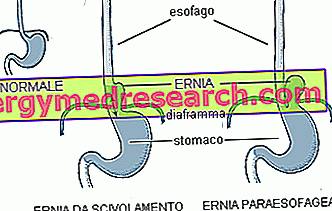Definition
A detectable abdominal mass may indicate the presence of an enlarged organ, a dilated vessel (aneurysm), a fecal mass or a neoplastic process.
The site of the swelling provides an important indication for understanding the pathology that caused it.
A pulsating mass in the mid-epigastric area (approximately in the middle of the abdomen) can lead to the suspicion of an aortic aneurysm. In the same region, swelling may represent a manifestation of a pancreatic abscess or gastric carcinoma.
A soft and painful swelling, which is evident with the increase in pressure above a weakened area, is characteristic, instead, of the abdominal hernia (umbilical or inguinal) or post-surgical (ie in correspondence with the site of a previous intervention).
If the mass is located in the right upper quadrant it may indicate the presence of hepatomegaly, renal or hepatic carcinoma, cholecystitis and cholelithiasis. When the swelling originates in the left upper quadrant, however, it is an expression of hydronephrosis, renal carcinoma and splenomegaly. In the suprapubic area, the abdominal mass can derive from a uterine myoma or bladder distension.
The inferior quadrant can be the site of ovarian cysts, Crohn's disease, fecaloma and diverticulitis.
Colon cancer, in addition to causing the appearance of a mass in the abdomen, can manifest itself with alterations of intestinal activity, pain and blood in the stool.
Possible Causes * of abdominal mass
- Gall bladder stones
- Colon cancer
- cholangiocarcinoma
- cholecystitis
- Diverticulitis
- Abdominal hernia
- Inguinal hernia
- Uterine fibroids
- hydronephrosis
- liposarcoma
- Crohn's disease
- Neuroblastoma
- Liver tumor
- Kidney tumor
- Stomach cancer
- Wilms tumor



